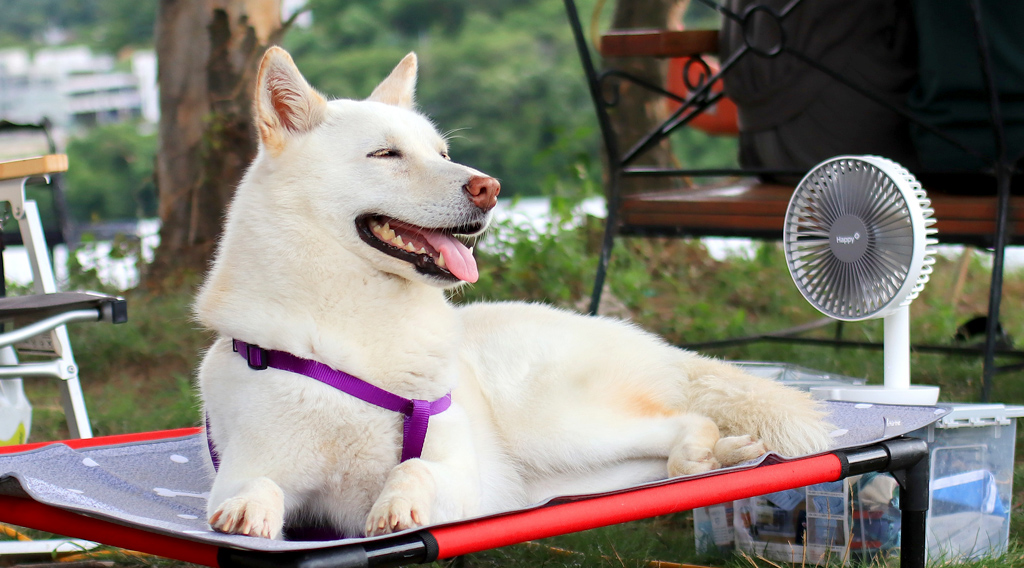Typically, Brownsburg’s hottest weather is not until July, but National Heat Awareness Day on May 30 serves as an early reminder of the dangers of heat-induced health threats and suggests precautions to minimize them.
The Occupational Safety and Health Administration (OSHA) and the National Weather Service originally designated the last Friday in May as National Heat Awareness Day to draw attention to the risks of heat exhaustion, dehydration, heatstroke and even death faced by outdoor laborers when temperatures climb.
As veterinarians, we observe National Heat Awareness Day by drawing attention to the dangers to pets posed by high temperatures and offering our advice on keeping pets safe in hot weather.
The #1 Hot-Weather No-No
No matter how much your dog loves going for a ride and how much you enjoy his or her company while you’re running errands, leaving a dog alone in a parked car—even if you park in the shade—even with all the windows open and the air conditioner running—even if you’re going to be gone for only a minute—even if it’s not that hot—is always a dangerously bad idea. Don’t do it.
Even if the outdoor temperature is only 70 degrees, the inside of your car may be as much as 20 degrees hotter. When the temperature is 85 degrees outside, it takes only 10 minutes for the temperature to rise to 102 degrees inside a car with all the windows opened slightly. After a half-hour, the temperature will reach 120 degrees, and a pet left in those conditions may well suffer irreversible organ damage or die.
Don’t risk endangering your pet’s life by leaving him or her in a parked car. Leave your pet comfortably, safely at home.
Comforts of Home
If your pet is outside in hot weather, make sure you provide plenty of open shade and fresh water, adding ice to the water on the hottest days.
Indoors, provide access to water and ideally, air-conditioned spaces.
Skip the Shave
While trimming longer hair on your dog is fine in hot weather, never shave your dog down to the bare skin. The coat’s layers protect dogs from overheating and sunburn.
Easy on the Exercise
Even pets conditioned to fairly rigorous exercise routines in more temperate weather need shorter duration and lowered intensity of activities on hot days. Schedule exercise with your pet in the cooler early morning or evening hours. Carry water with you to prevent dehydration.
Avoid Hot Pavement
Hot asphalt can expose your pet’s body to extreme heat rising off the surface. Contact with hot pavement can burn paws. Check the pavement temperature with the back of your hand before leading your pet onto hot pavement and walk on the grass as much as possible.
Heatstroke
Dogs exposed to high temperatures can suffer heatstroke. The signs include—
- Heavy panting
- Glazed eyes
- Rapid heartbeat
- Difficulty breathing
- Excessive thirst
- Lethargy
- Fever
- Dizziness
- Lack of coordination
- Profuse salivation
- Vomiting
- Brick red gum color
- A deep red or purple tongue
- Seizure
- Unconsciousness
Animals most susceptible to heatstroke are the very young and the very old, overweight and out-of-shape pets, and those suffering from heart or respiratory disease. Dogs with flat faces, like bulldogs, pugs and shih tzus, and flat-faced cats, like Persians and exotic shorthairs, have a much harder time breathing in extreme heat and are much more prone to heatstroke. Keep them in air-conditioned spaces.
If your pet is showing signs of heatstroke, move him or her to the shade or into an air-conditioned space. Apply ice packs or cold towels to their head, neck and chest and run cool water over them from a water hose. Offer small amounts of cool water to drink and ice cubes to lick. Get them to a veterinarian immediately, as heatstroke can lead to severe organ dysfunction and damage.
Heed the Humidity, Too
Animals pant to cool themselves by evaporating moisture from their lungs, but high humidity interferes with cooling and body temperature rises.
When the humidity is high, pay close attention to your pet and be prepared to take the same emergency measures you would in the event of a heatstroke.

